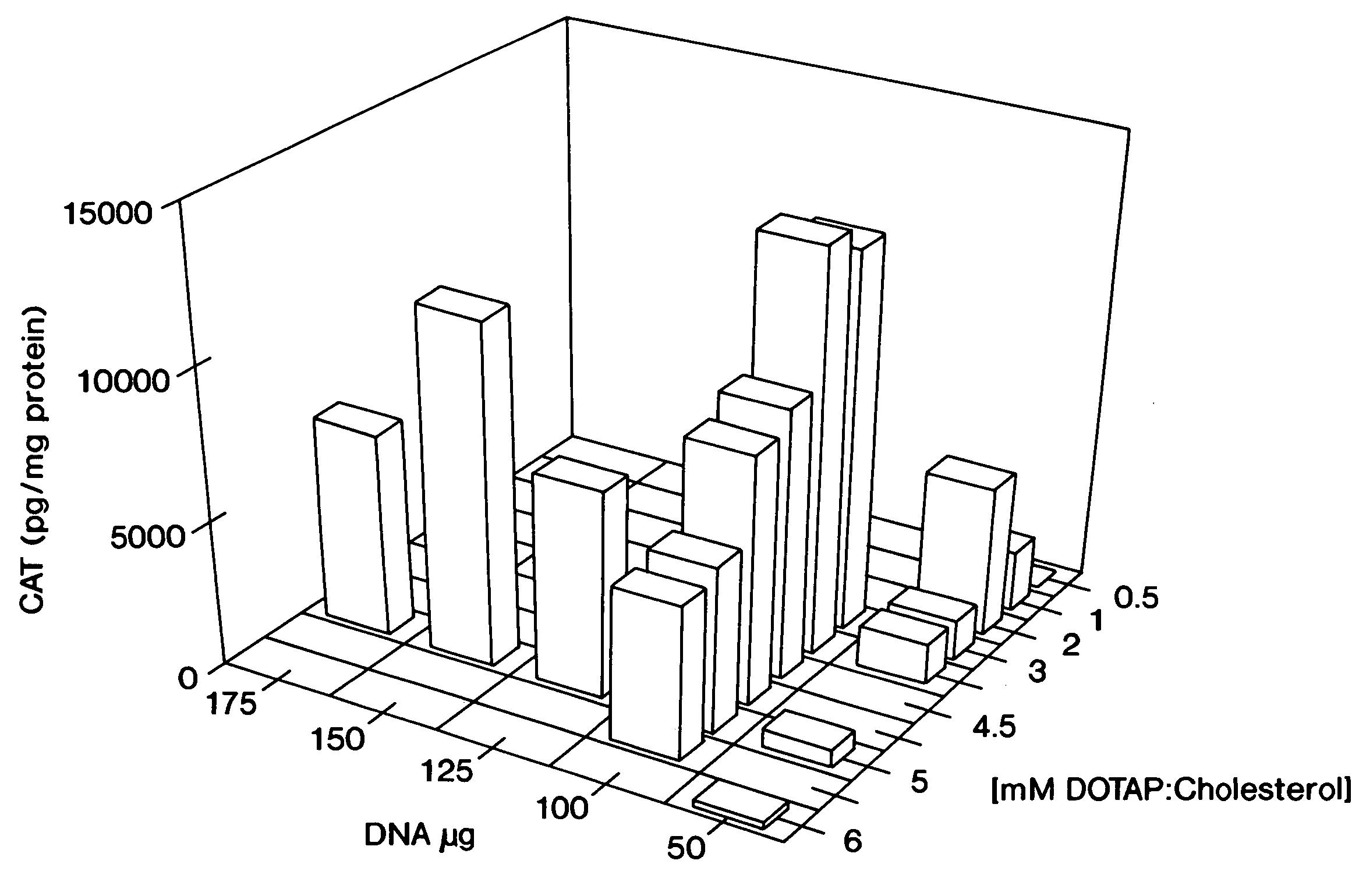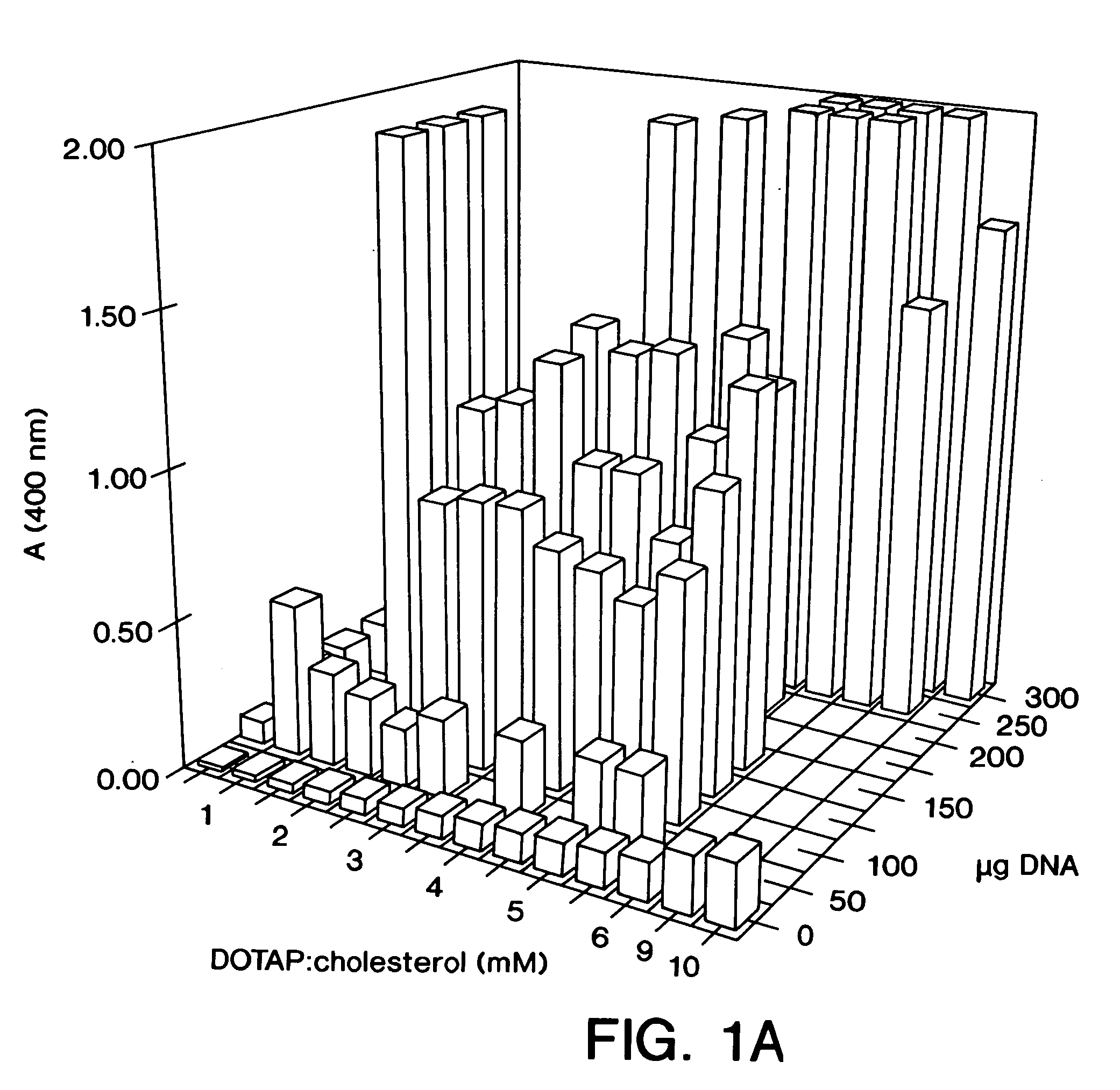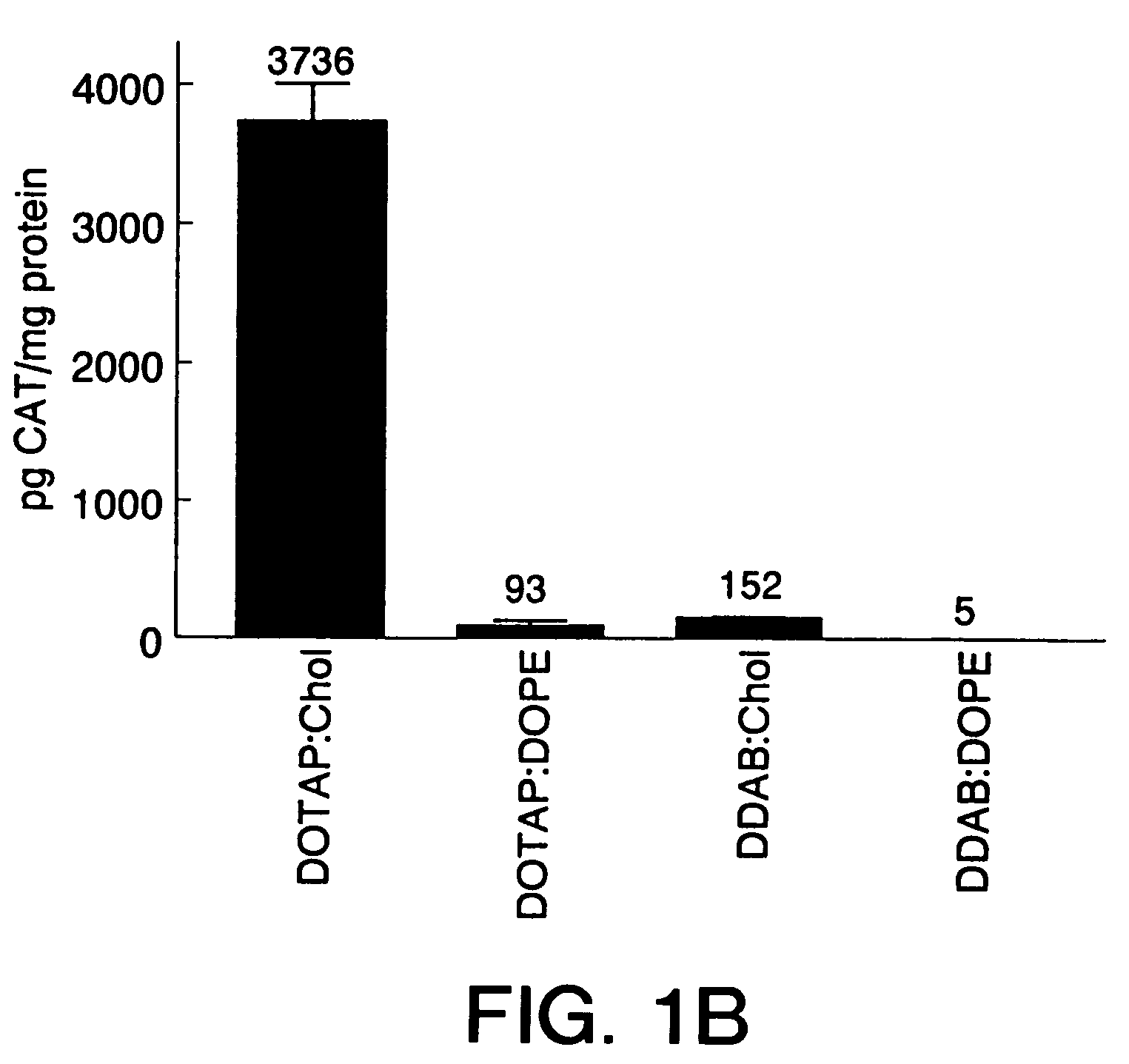Liposome complexes for increased systemic delivery
a technology of liposomes and complexes, applied in the field of liposome preparation, can solve the problems of inability to deliver viral dna vectors repeatedly, less efficient intravenous dna delivery in animals using cationic liposomes, and inability to achieve the effect of viral dna vector delivery
- Summary
- Abstract
- Description
- Claims
- Application Information
AI Technical Summary
Benefits of technology
Problems solved by technology
Method used
Image
Examples
example 1
[0074]DOTAP:Chol liposomes, as well as other liposome formulations, were prepared using the following procedure: the cationic lipid (DOTAP or DDAB) was mixed with the neutral lipid (Chol or DOPE) at equimolar concentrations. The mixed powdered lipids were dissolved in HPLC-grade chloroform (Mallinckrodt) in a 1 L round bottomed flask. The clear solution was placed on a Buchi rotary evaporator at 30° C. for 30 min to make a thin film. The flask containing the thin lipid film was dried under vacuum for 15 min. The film was hydrated in 5% dextrose in water (“D5W”) to give a final concentration of 20 mM DOTAP (or 20 mM DDAB) and 20 mM Chol (or 20 mM DOPE), and is referred to as 20 mM DOTAP:Chol. The hydrated lipid film was rotated in a 50° C. H2O bath for 45 min and then at 35° C. for an additional 10 min. The mixture was allowed to stand in the parafilm-covered flask at room temperature overnight. On the following day, the mixture in the flask was sonicated for 5 min at 50° C., transfe...
example 2
DNA-sandwich Liposomes
[0075]DNA:liposome complexes were prepared the day prior to their use in an animal host. DNA was diluted in D5W (5% dextrose in water), and stock liposomes were diluted in D5W to produce various ratios of DNA:liposomes. The final volumes of both the DNA solution and the liposome solution used for mixing were equal. Dilutions and mixings were performed in 1.5 ml Eppendorf tubes with all reagents at room temperature. The DNA solution was added rapidly at the surface of the liposome solution using a pipette tip. The DNA:liposome mixture was mixed rapidly up and down twice using a Pipetman. DNA:liposome complexes were stored overnight at 4° C.
[0076]The protocol used for DNA preparation, referred to herein as the Debs protocol, is a variation of the alkaline lysis procedure described by Maniatis (Sambrook et al. (1989)), and includes a 2 hour Proteinase K digestion step immediately following R-Nase A digestion. This method consistently produced about 20-fold greater...
example 3
In Vivo Administration of DNA-sandwich Liposomes
[0077]For in vivo intravenous administration, 6-weeks old (˜20 g) BALB / c mice were injected in the tail vein with 200 μl of DNA:liposome complexes using a 27-gauge syringe needle. Samples were placed at room temperature for 1 hour prior to tail vein injection. Mice were sacrificed 24 hours post-injection, and the organs were harvested and quickly frozen on liquid nitrogen. Tissue extracts were prepared as previously described (Stribling et al. (1992)). Lymph node extracts consisted of pooled mesenteric, axillary, iliac, submandibular, and inguinal lymph nodes. ELISAs were performed using. the Boehringer Mannheim CAT ELISA kit. All CAT protein determinations were corrected for any CAT immunoreactivity detected in control tissues, and the lowest levels of CAT protein reported for any experimental tissues were at least 3-fold higher than background. Protein determinations were performed using the Micro BCA kit (Pierce). This work was cond...
PUM
| Property | Measurement | Unit |
|---|---|---|
| volume | aaaaa | aaaaa |
| diameter | aaaaa | aaaaa |
| diameter | aaaaa | aaaaa |
Abstract
Description
Claims
Application Information
 Login to View More
Login to View More - R&D
- Intellectual Property
- Life Sciences
- Materials
- Tech Scout
- Unparalleled Data Quality
- Higher Quality Content
- 60% Fewer Hallucinations
Browse by: Latest US Patents, China's latest patents, Technical Efficacy Thesaurus, Application Domain, Technology Topic, Popular Technical Reports.
© 2025 PatSnap. All rights reserved.Legal|Privacy policy|Modern Slavery Act Transparency Statement|Sitemap|About US| Contact US: help@patsnap.com



